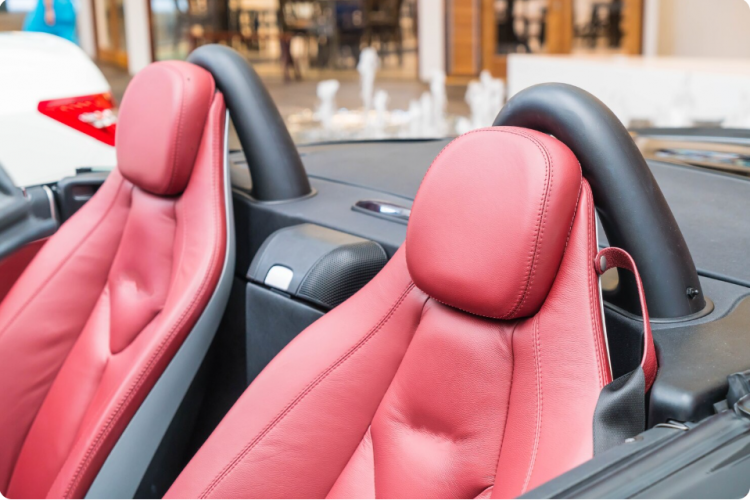There was a time when having leather seats in your car meant one thing — luxury. Thick, soft, aromatic hides covered every surface, giving a sense of craftsmanship that matched the car’s price tag. But if you’ve bought a car in the past decade, you’ve probably noticed that the “leather interior” doesn’t feel quite the same.
Today’s automotive “leather” often looks the part but behaves very differently. The reason? Most car manufacturers have quietly shifted to blended or partial leather materials — real leather mixed with polyurethane (PU), vinyl, or microfiber. These changes make interiors cheaper to produce and easier to clean, but they also make them less durable and much more prone to wear.
From Full-Grain Luxury to Cost-Cutting Blends
Before the mid-2000s, genuine full-grain or top-grain leather was common in premium vehicles. Automakers like BMW, Lexus, and Mercedes-Benz invested in high-quality hides that could last decades with proper care. But after 2010, things began to change. As production costs rose and consumers demanded more affordable options, manufacturers turned to “eco-leather” or “synthetic-leather inserts.”
In many new models, only the seat centers or main touchpoints are real leather — the rest is coated vinyl or PU. These materials are lighter, less expensive, and more resistant to staining during the first few years. However, they lack the breathability and long-term resilience of genuine leather. The result? By year three or four, the “leather” starts cracking, fading, and losing its softness, especially in sun-exposed areas.
Why Your Seats Age Faster Than You Think
Leather is a natural material — it breathes, stretches, and reacts to temperature and UV light. When the surface coating is replaced with a synthetic film, the leather underneath can’t “breathe.” Over time, the trapped heat and moisture cause micro-cracks, leading to visible damage within 3–5 years.
Daily use accelerates this process. Sliding in and out of the driver’s seat causes friction, and sunlight oxidizes the dye. Even luxury vehicles aren’t immune — modern coatings make the finish shiny but fragile.
According to automotive upholstery specialists, the average lifespan of untreated car leather has dropped from 10–12 years in the early 2000s to about 5–7 years today. That’s a big difference, especially considering how much new vehicles cost.
Why This Isn’t the Driver’s Fault
It’s easy to assume that poor maintenance is to blame, but even careful owners are often surprised by how quickly modern interiors deteriorate. The truth is: today’s car leather simply isn’t built to last like it once was.
At Leather Care Help, we restore hundreds of seats each year across San Diego — from daily commuters to high-end Teslas and Range Rovers. We see the same pattern repeatedly: peeling color, cracked bolsters, and faded panels, often in vehicles less than five years old.
Many owners are shocked to learn that what looks like “leather” is actually a mix of real hide and artificial material. While that’s not necessarily bad, it requires a different approach to cleaning, conditioning, and restoring.
Professional Restoration: A Smart Alternative to Replacement
The good news is that modern damage can be reversed. Professional leather restoration brings faded or cracked seats back to life at a fraction of the replacement cost.
Our process includes deep cleaning, color matching, and re-coating with UV-resistant dye designed specifically for automotive interiors. Unlike DIY kits, professional restoration ensures the repaired area blends perfectly with the rest of the seat — no mismatched tones, brush marks, or sticky surfaces.
For San Diego drivers searching for car seat restoration San Diego, our mobile service makes it convenient. We come directly to your location, so you don’t need to remove the seat or leave your car at a shop. Whether you have a single cracked bolster or a full interior refresh, the results are smooth, color-consistent, and durable.
How to Keep Your Leather Looking Great Longer
If your seats are still in good condition, prevention is key. Follow these three simple habits to extend their life:
- Clean monthly with a pH-neutral automotive leather cleaner. Avoid baby wipes, alcohol, or household detergents.
- Condition every 3–4 months with a high-quality leather conditioner — this keeps the fibers hydrated and flexible.
- Protect from direct sunlight by parking in shade or using window tint and sunshades. UV exposure is one of the main causes of fading and surface cracking.
Even if you do everything right, some aging is inevitable — especially in warm climates like Southern California. But with regular care and timely restoration, your leather can stay beautiful and soft for many more years.
Final Thoughts
Modern automotive leather may not have the timeless quality it once did, but that doesn’t mean you have to settle for worn, cracked seats. With professional restoration and proper maintenance, your car interior can still look and feel luxurious for years to come.








